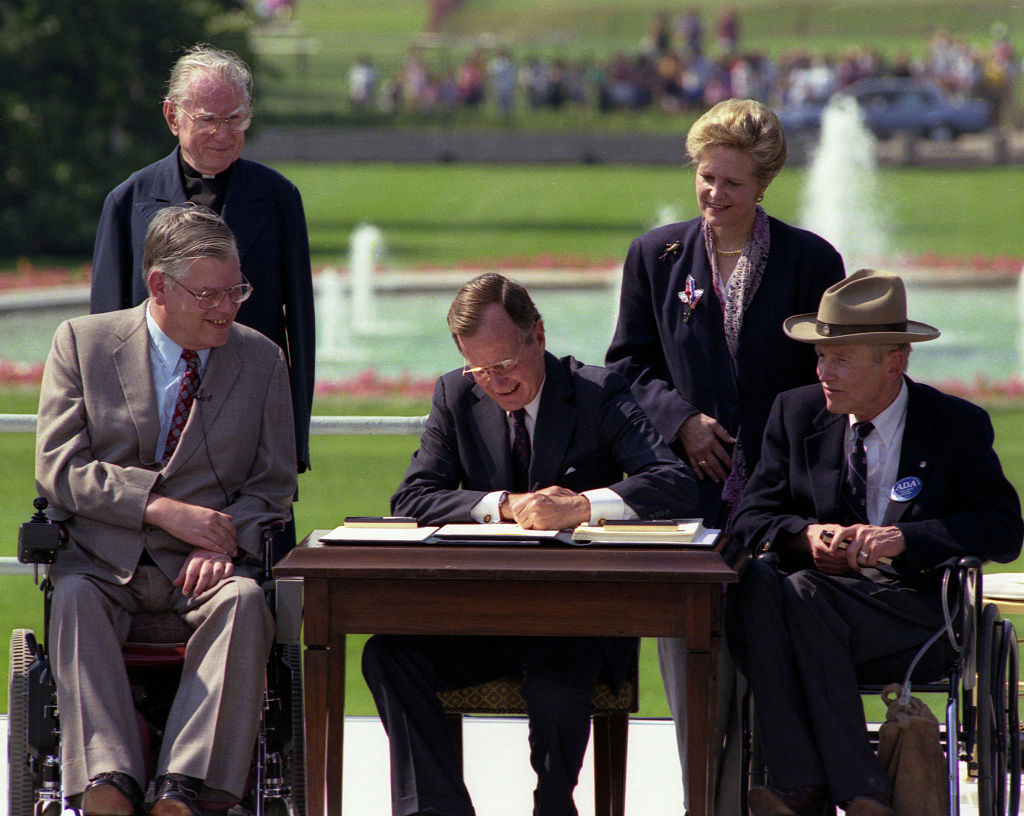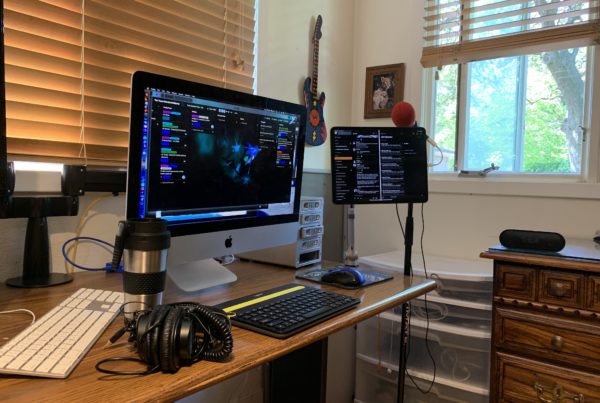On July 26, 1990, President George H.W. Bush signed the Americans with Disabilities Act.
The landmark law turns 30 this Sunday. The ADA bars discrimination against people with disabilities in housing, public accommodation and employment. It provides protections that many may assume have always been the law of the land. But before the ADA, many people with disabilities lived in institutional settings, often found it difficult to enter public places and had no recourse when denied a job.
Lex Frieden is director of the Independent Living Research Utilization Program at TIRR, Memorial Hermann Hospital in Houston. He has also been called one of the chief architects of the ADA. He told Texas Standard host David Brown on Friday that before the ADA, moving down a sidewalk, watching a movie or getting into college were significant challenges for people with disabilities.
“I, myself actually applied to a university and was told I couldn’t come, simply because of the fact I used a wheelchair for mobility,” Frieden said.
The disability rights movement began to grow in the 1960s, along with other efforts at expanding rights. Frieden says veterans returning from the Vietnam War, many of whom had disabilities, found they were prevented from participating in society because of those disabilities. The Civil Rights movement was also a driver of activism, but Frieden said people with disabilities were excluded from the 1964 Civil Rights Act.
“And finally, people with disabilities, in the mid-70s, began to organize in cities, in states and around the country, and a movement sort of took root,” Frieden said.
In the 1980s, work toward expanding disability rights moved to Washington, where the National Council on Disability, a small federal agency, was tasked with writing a draft report on conditions affecting people with disabilities. Frieden worked on that report, which included a recommendation for a law like the ADA. He said then-Vice President Bush championed the report. When Bush became president two years later, he directed that an updated report be developed that laid out the elements of what would become the ADA.
Frieden said the ADA prohibits discrimination in a wide array of public contexts.
“It basically says you can’t treat people with disabilities – people with impairments, people with physical, sensory, psychiatric, intellectual, people with any type of disability – you must accept that they are equal,” Frieden said.
The law applies to a wide swath of activities, including housing, employment, recreation and health care.
The law requires accommodations for people with disabilities to be “reasonable and readily achievable.” Those requirements are included in the law to prevent “breaking the backs” of certain small businesses, Frieden said.
“The vision of ADA is full participation of people with disabilities in our economy and our society, in our schools, in our workplaces.” he said.
In the 30 years since the ADA’s passage, court cases have clarified the act’s parameters. One of these was Olmstead v. L.C., a Georgia case concerning two women with intellectual disabilities who sued for state support of their ability to live independently, rather than in a state institution. The Supreme Court ruled in 1999 that the women had been discriminated against because of their disabilities.
“That was a real landmark decision, based on the Americans with Disabilities Act,” Frieden said.
The ADA Amendment Act of 2008, signed by President George W. Bush in September of that year, clarified and extended the ADA to cover more kinds of disabilities and categories of discrimination.
Frieden said accessibility issues remain today, including access to online resources, like web sites and streaming content. He said there are still issues with employment, transportation and independent living options.
“The unemployment rate among people with disabilities who are qualified, able to work and want a job, is not much better… since the law was passed,” he said. “There’s about the same proportion of the population who are trying to seek work that are not employed.”
He said the COVID-19 pandemic has provided an indication that people with disabilities are just as productive as other workers, all of whom are working from home.
On the evening before President Bush signed the ADA in 1990, Frieden was visiting a cousin who was a producer in CNN’s Washington studios. Frieden watched as the network’s staff planned how they would cover the signing ceremony, scheduled for the next day.
“The CNN director said, ‘we’ll cover the ADA signing in little, short broadcasts, maybe a little clip, once an hour,'” Frieden said.
Frieden encouraged the team to give more coverage to the event.
“This will affect people all over the country, and all over the world,” he told them.
CNN gave full coverage to the ceremony, both in the U.S., and around the world on its international channels.
On Sunday, a coalition of organizations in Houston will present ADA30, an online celebration of the 30th anniversary of the Americans with Disabilities Act. The program will feature an interview with Lex Frieden.
Individuals or organizations with questions about the ADA and its interpretation may contact the ADA Information Line, operated by the U.S. Department of Justice. Call 800-514-0301 (voice) or 800-514-0383 (TTY).















